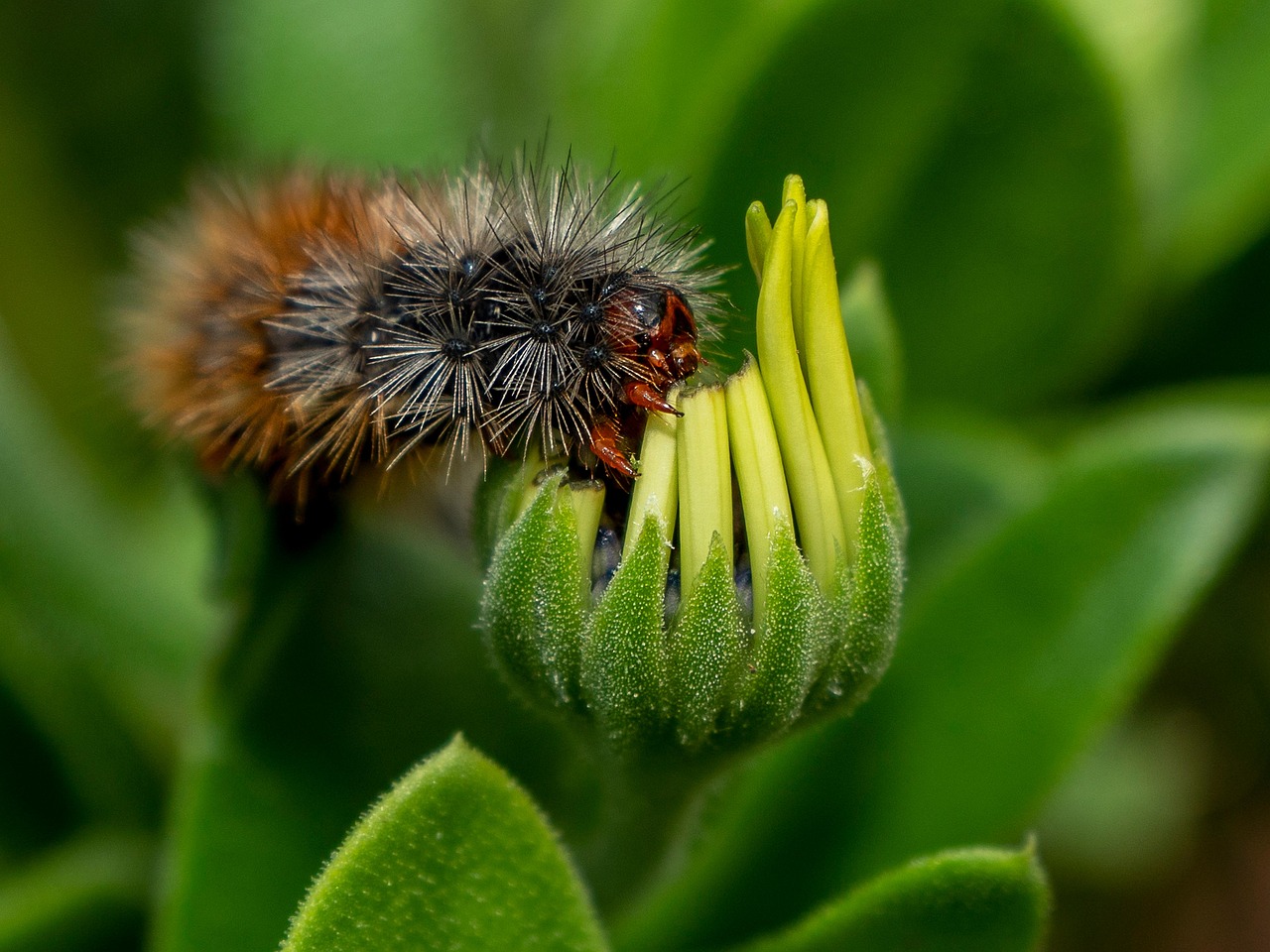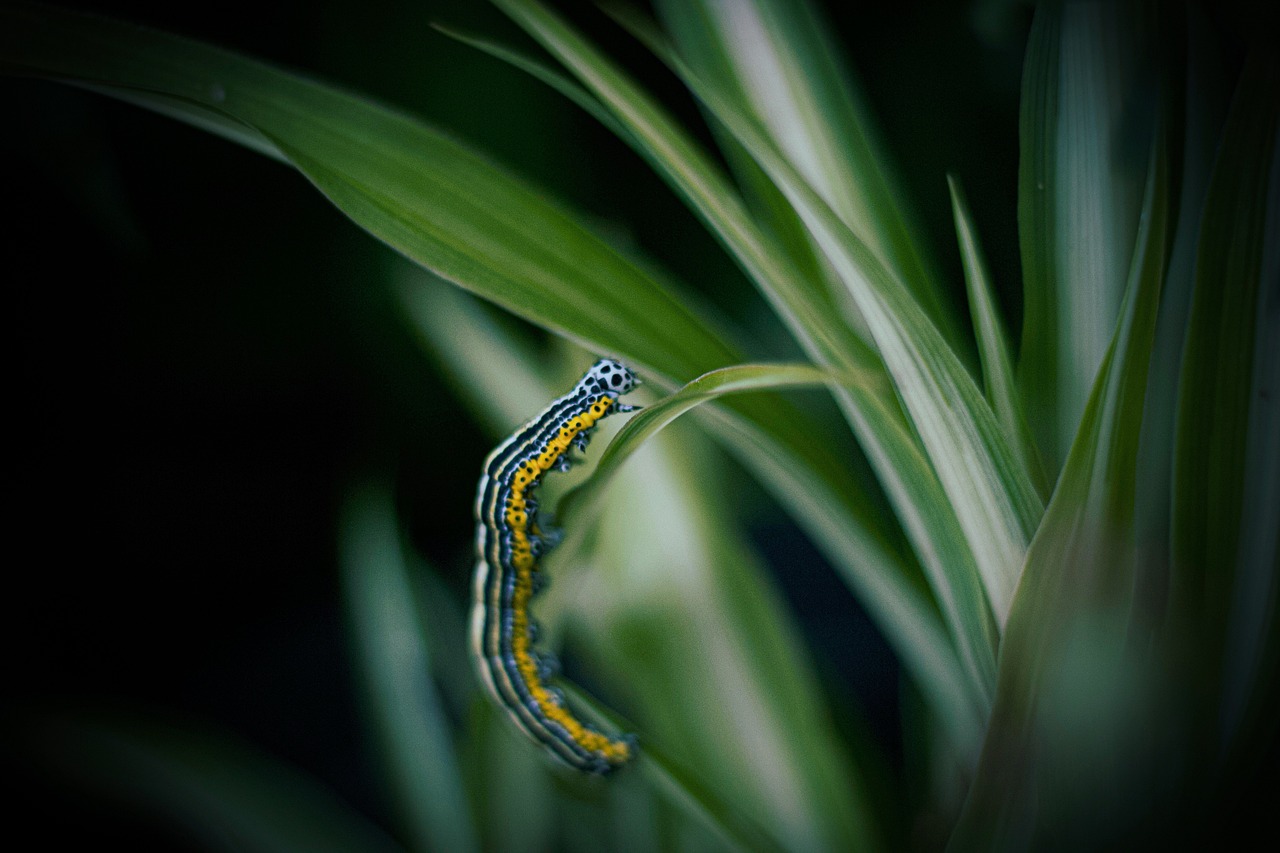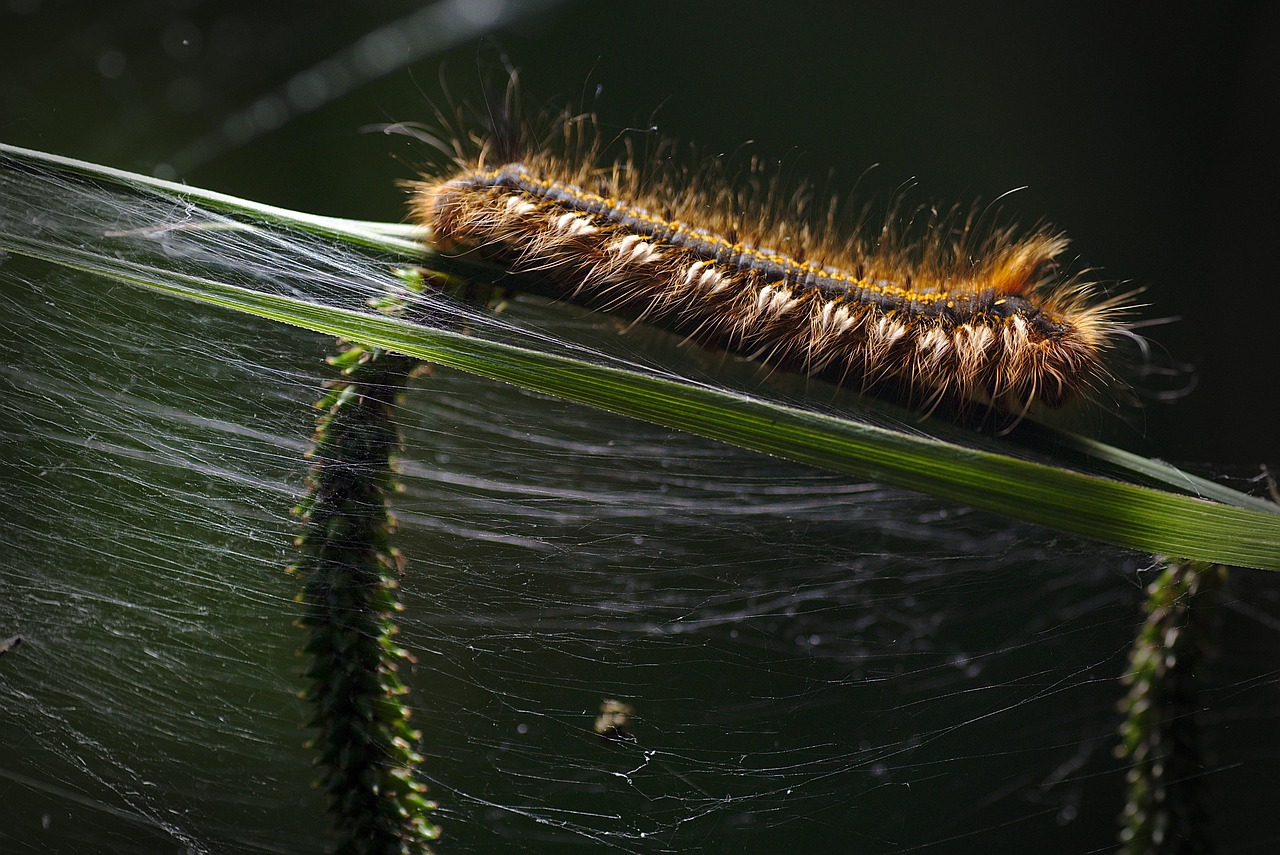Venomous caterpillars are not your ordinary garden pests. These fascinating creatures can deliver painful stings and potent venom, making them a serious concern for anyone who encounters them. Understanding their dangers is crucial for safety.
Caterpillars, the larval stage of moths and butterflies, are often overlooked when discussing venomous organisms. However, some species possess venom that can cause severe reactions in humans. Their unique adaptations for defense and predation make them intriguing yet hazardous. Caterpillars can be found in various environments, from lush forests to urban gardens. It is essential to recognize these creatures and understand the risks associated with them.

Many people are unaware that caterpillars can be venomous. This lack of knowledge can lead to accidental encounters and painful consequences. Some caterpillars have evolved to mimic the appearance of more dangerous animals, further complicating identification. This article will explore the dangers posed by these venomous caterpillars, highlighting key species and their effects on humans.
Understanding Venomous Caterpillars
Venomous caterpillars use various strategies to protect themselves from predators. Some have evolved bright colors or distinctive patterns that signal their toxicity, while others rely on physical defenses such as spines or hairs that deliver venom when touched.
It is important to note that not all caterpillars are harmful. However, certain species have developed potent venoms that can cause significant harm to humans. The effects of contact with these caterpillars can vary, including pain, swelling, and in rare cases, allergic reactions that may require medical attention.
| Caterpillar Species | Common Name | Region Found | Symptoms of Contact |
|---|---|---|---|
| Lonomia obliqua | Giant Silkworm Moth Caterpillar | South America | Severe bleeding, fever |
| Hyalophora cecropia | Cecropia Moth Caterpillar | North America | Painful stings, rash |
| Megalopyge opercularis | Flannel Moth Caterpillar | Southern United States | Intense pain, nausea |
| Automeris io | Io Moth Caterpillar | North America | Burning sensation, swelling |
The table above highlights some of the most notable venomous caterpillars found in different regions. Each species has unique characteristics and symptoms associated with their venom. Awareness of these species can help individuals avoid potentially dangerous encounters.
Understanding the risks associated with these caterpillars is essential for outdoor enthusiasts, gardeners, and anyone who spends time in nature. While they may not be as well-known as other venomous creatures, their presence in various habitats should not be underestimated.
In addition to their physical defenses, many venomous caterpillars employ behavioral strategies to deter predators. Some may drop from leaves when threatened, while others may display aggressive postures or vibrant warning colors. These adaptations show the evolutionary importance of maintaining a safe distance from potential threats.
Identifying Venomous Caterpillars
Identifying venomous caterpillars is crucial for preventing harmful encounters. Many species exhibit distinctive features that can help in recognition. These characteristics may include color patterns, body shapes, and the presence of spines or hairs.
Key Features to Look For
When trying to identify venomous caterpillars, consider the following features:
- Coloration: Bright colors are often indicative of toxicity. Caterpillars like the Lonomia obliqua have striking patterns that serve as a warning.
- Body Structure: Some venomous caterpillars have flattened bodies or unusual shapes that set them apart from non-venomous species.
- Defensive Structures: Spines and bristles can indicate a caterpillar’s venomous nature. These structures are typically painful to touch.
- Behavior: Observing a caterpillar’s behavior can provide clues. Many will curl up or drop when threatened.
Common Venomous Caterpillars

Several species of caterpillars are well-known for their venomous properties. Familiarizing yourself with these can help avoid dangerous encounters.
The Lonomia obliqua
The Lonomia obliqua, also known as the Giant Silkworm Moth Caterpillar, is found in South America. This caterpillar is notorious for its potent venom that can cause severe bleeding and even fatalities.
The Megalopyge opercularis
This species, commonly referred to as the Flannel Moth Caterpillar, is found throughout the Southern United States. Its appearance resembles a tuft of cotton, but contact can lead to intense pain and severe allergic reactions.
The Automeris io
The Io Moth Caterpillar, prevalent in North America, is another species to be cautious of. Its bright green body adorned with spines can induce a burning sensation upon contact.
Symptoms of Venom Exposure

If someone comes into contact with a venomous caterpillar, they may experience various symptoms depending on the species and individual sensitivity. Common symptoms include:
- Pain: Immediate and intense pain at the site of contact.
- Swelling: Localized swelling may occur, often accompanied by redness.
- Nausea: Some individuals may feel nauseous or dizzy after exposure.
- Allergic Reactions: Severe allergic reactions can lead to difficulty breathing or anaphylaxis in susceptible individuals.
First Aid for Caterpillar Stings
If stung by a venomous caterpillar, prompt treatment is essential. Here are some initial steps to take:
- Remove any spines: Use tape or tweezers to carefully remove any spines stuck in the skin.
- Clean the area: Wash the affected area with soap and water to prevent infection.
- Apply cold compress: A cold compress can help alleviate pain and swelling.
- Seek medical attention: If symptoms worsen or severe allergic reactions occur, contact a healthcare professional immediately.
Understanding how to manage encounters with venomous caterpillars is vital for safety in outdoor environments. Awareness and education about these creatures can significantly reduce the risk of harm.

Preventing Encounters with Venomous Caterpillars
To ensure safety while enjoying nature, it is essential to take preventive measures against encounters with venomous caterpillars. By being aware of their habitats and behaviors, individuals can significantly reduce the risk of stings.
Habitat Awareness
Understanding where venomous caterpillars are likely to be found can help individuals avoid them. Common habitats include:
- Wooded Areas: Many species thrive in forests, particularly near oak and other trees.
- Gardens: Some venomous caterpillars are found in residential gardens or parks, often camouflaged among plants.
- Fields and Meadows: Open spaces with abundant vegetation can also house these creatures.
Being cautious in these areas, especially during late spring and summer when caterpillars are most active, can minimize the risk of encounters.
Recognizing Caterpillar Behavior
Understanding how venomous caterpillars behave can also aid in prevention. Here are some behaviors to watch for:
- Camouflage: Many venomous caterpillars blend in with their surroundings, making them difficult to spot.
- Defensive Postures: Some may curl up or display bright colors when threatened, signaling their venomous nature.
- Movement Patterns: They often move slowly and deliberately, which may help them avoid detection by predators.
Safe Practices in Nature
Implementing safe practices while exploring outdoor environments can further reduce the chances of coming into contact with venomous caterpillars. Consider the following recommendations:
- Avoid Direct Contact: Do not touch caterpillars unless you are certain they are non-venomous. Always observe from a distance.
- Wear Protective Clothing: Long sleeves, pants, and gloves can provide an extra layer of protection when venturing into areas where caterpillars may reside.
- Educate Others: Share information about venomous caterpillars with family and friends to raise awareness and promote safety.
- Use Caution When Handling Plants: Be careful when reaching into dense foliage, as venomous caterpillars often hide on the undersides of leaves.
Caterpillar Identification Resources
Utilizing resources for identifying caterpillars can greatly enhance safety. Various tools and platforms can assist in recognizing species:
- Field Guides: Printed field guides specific to local fauna can be invaluable for identifying caterpillars.
- Mobile Apps: Many smartphone apps allow users to take pictures of insects and receive instant identification.
- Online Communities: Forums and social media groups focused on entomology can provide support and advice from enthusiasts and experts.
By utilizing these resources, individuals can become more adept at recognizing potentially dangerous species and learning more about their behavior and habitats.
The Role of Education in Safety
Education plays a crucial role in minimizing risks associated with venomous caterpillars. Schools, nature centers, and community programs can offer workshops or presentations that teach about local wildlife, including how to identify venomous species and what to do in case of contact.
Participating in these educational opportunities not only increases awareness but also fosters a deeper appreciation for the biodiversity present in various ecosystems. Understanding the ecological importance of caterpillars can lead to more responsible interactions with nature.
Understanding the Ecological Impact of Venomous Caterpillars
Venomous caterpillars play a unique role in their ecosystems. While they pose risks to humans, they also contribute to the balance of nature. Understanding their ecological significance can offer a broader perspective on these fascinating creatures.
These caterpillars serve as important food sources for various predators, including birds and other insects. Their presence in the food web supports the survival of numerous species. Additionally, by feeding on plants, they can help regulate vegetation growth, which is essential for maintaining healthy ecosystems.
Interactions with Other Species
Venomous caterpillars often engage in complex interactions with other organisms. Some of these interactions include:
- Predation: Many birds and small mammals have learned to avoid caterpillars that are brightly colored or have spines, as these traits signal toxicity.
- Parasitoids: Certain wasps lay eggs in or on caterpillars, and the larvae feed on the host, showcasing a fascinating aspect of parasitic relationships.
- Mutualism: Some caterpillars may have mutualistic relationships with ants, where ants protect them from predators in exchange for sugary secretions.
These interactions not only highlight the complexity of ecosystems but also emphasize the need to respect all forms of life, including those that can be dangerous to humans.
Future Research Directions
Research on venomous caterpillars is ongoing and could lead to exciting discoveries. Scientists are exploring various aspects, including:
- Toxin Composition: Studying the chemical makeup of caterpillar venom can provide insights into potential medical applications, such as pain relief or anti-inflammatory properties.
- Climate Change Effects: Understanding how climate change impacts caterpillar habitats and behaviors is vital for conservation efforts.
- Conservation Strategies: Research may help develop strategies to protect both venomous caterpillars and their habitats, ensuring biodiversity preservation.
The need for continued research underscores the importance of these creatures in our ecosystems and the benefits they may hold for future generations.
Final Thoughts
Venomous caterpillars, while often misunderstood, are remarkable creatures that deserve our respect and caution. Awareness of their existence and understanding their behaviors can help prevent harmful encounters. By educating ourselves and others, we can promote safety while appreciating the diversity of life around us.
These caterpillars are vital components of their ecosystems, contributing to food webs and plant health. Recognizing their ecological role can enhance our appreciation for nature’s complexity. As we continue to explore and study these intriguing organisms, we open the door to new knowledge that may benefit both humanity and the environment.
In summary, handling venomous caterpillars with extreme caution is essential for personal safety. However, fostering a sense of wonder about these unique animals can lead to a deeper understanding of their place in our world. By combining caution with curiosity, we can enjoy the beauty of nature while staying safe.
